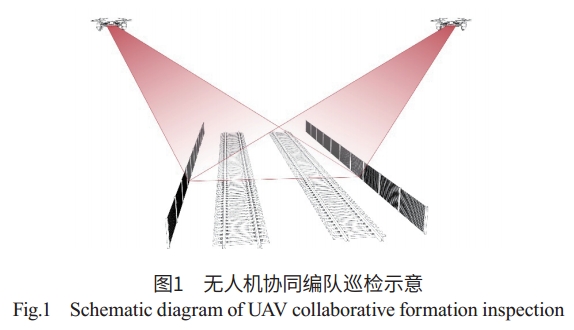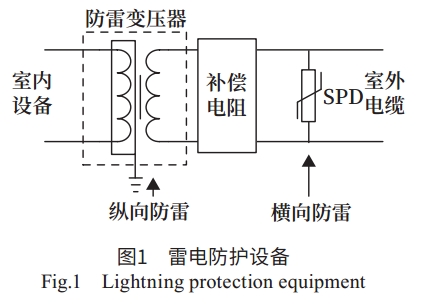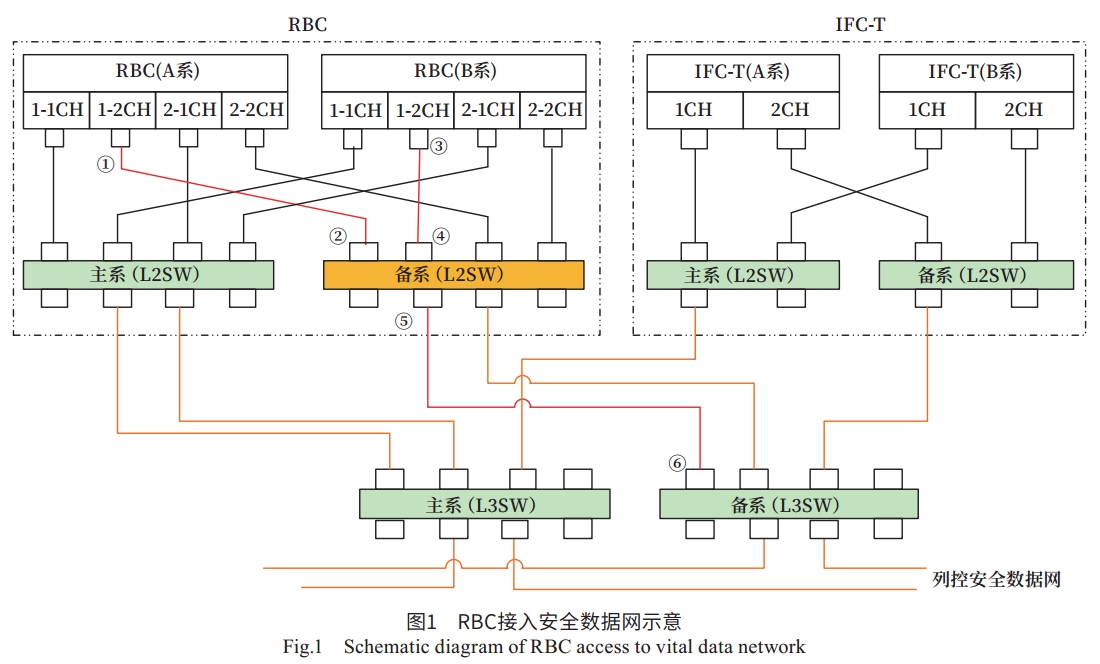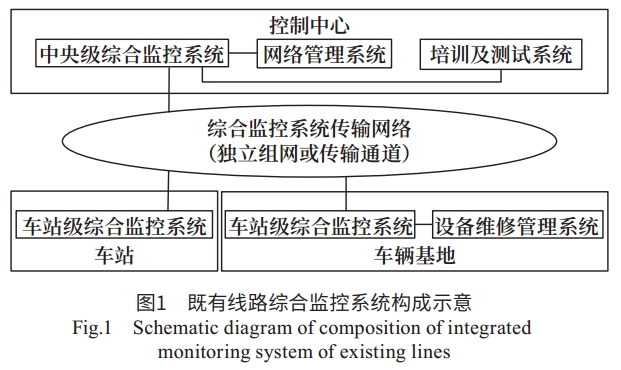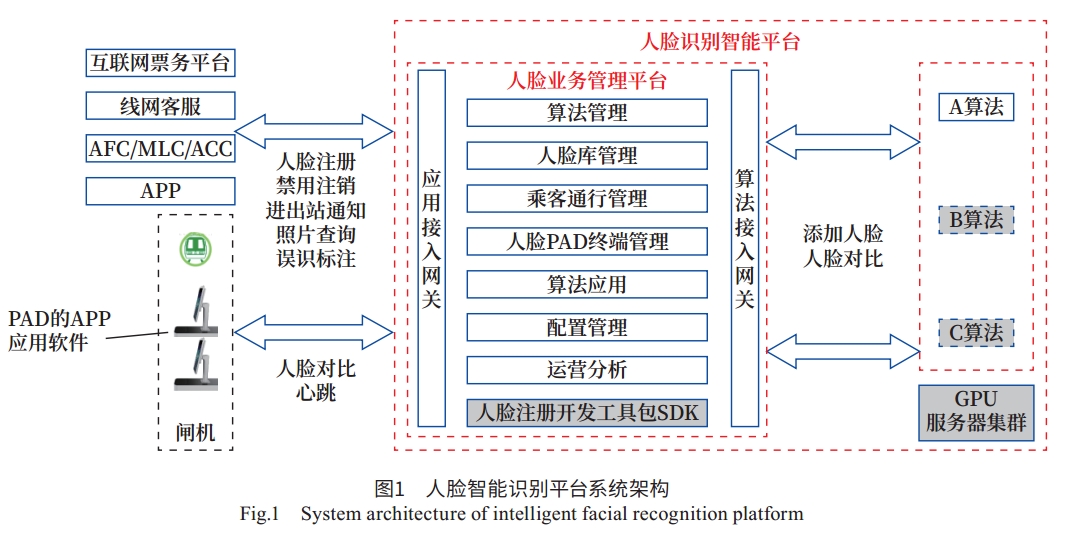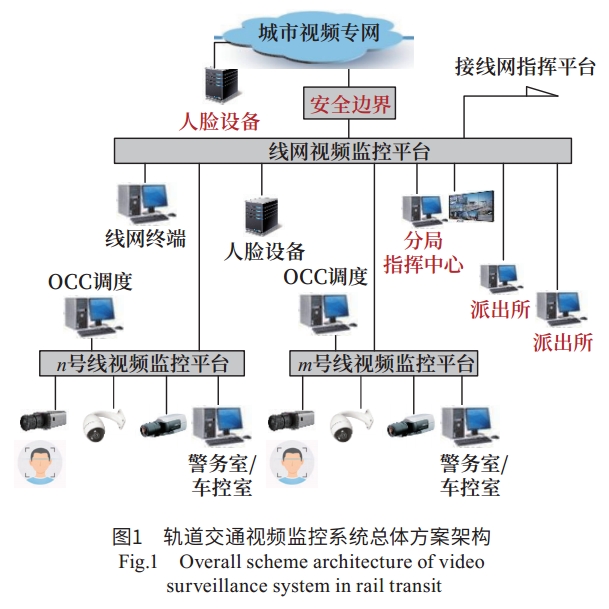Welcome to Railway Signalling & Communication Engineering,
Today is
中文
Current Issue
-
Current Status and Development Trends of Autonomous UAV Intelligent Inspection Technology for Railway Infrastructure
-
Qin Yong, Zhang Zicheng, Yang Huaizhi, Meng Fanteng, Cui Jing, Qiu Ninghai, Meng Tong, Liu Pengshuai, Wang Yang, Wang Zhipeng
-
2025 Vol. 22 (2):
1-10.
DOI:10.3969/j.issn.1673-4440.2025.02.001
-
Abstract (
)
PDF
(2241KB)(
)
-
With the extended service life of existing railway infrastructure, its performance deteriorates due to the impact of the environment and natural disasters, resulting in frequent damages. Advanced inspection technologies are required to comprehensively monitor its service status. Current mechanical and sensor-assisted inspection methods have problems such as low inspection frequency, limited coverage, and insufficient intelligent analysis capabilities. There are many inspection blind spots in areas like bridges, tunnel entrances, etc. UAV inspection has advantages such as aerial operation, long-distance coverage, and less restriction by terrain and construction windows. This paper focuses on the "edge-cloud collaboration" distributed architecture of the UAV intelligent inspection analysis system for rail transport. It explores how edge-end technologies, cloud technologies, and intelligent analysis models collaborate to optimize the inspection tasks of railway infrastructure. The inspection value of this technology is verified through practical engineering application cases. Based on the autonomy level of the UAV system, the potential application scenarios and research directions of future UAV technologies in the inspection of railway infrastructure are envisioned.
-
-
Intelligent Railway Inspection Method Based on UAV Cooperative Formation Control
-
Li Hao, Niu Hongjiao, Li Xiayang, Yuan Xiaofang
-
2025 Vol. 22 (2):
11-17,70.
DOI:10.3969/j.issn.1673-4440.2025.02.002
-
Abstract (
)
PDF
(2148KB)(
)
-
With the rapid development of railway transport networks, higher demands are placed on the intelligence and efficiency of railway inspections. This paper proposes an inspection method based on UAV cooperative control to address side-flying and side-view detection challenges under railway safety zone constraints. By designing a formation control model and optimizing cooperative algorithms, the proposed method achieves precise coverage and path tracking for inspection tasks. Theoretical modeling and simulation testing validate its superior performance in formation path tracking control. Furthermore, the proposed method demonstrates strong versatility and can also be applied to inspections of strip-shaped infrastructures, such as highways and oil and gas pipelines, providing an efficient solution for intelligent inspection tasks.
-
-
Research on Intelligent Inspection and Scheduling System for Unmanned Aerial Vehicles in Marshalling Yard
-
Li Guangzhi, Li Fei, Huang Zhiwei, Li Daming, Chen Kehang, Meng Xiaoyang, Wu Hao
-
2025 Vol. 22 (2):
18-23,83.
DOI:10.3969/j.issn.1673-4440.2025.02.003
-
Abstract (
)
PDF
(3039KB)(
)
-
At present, various inspections of the marshalling yard are mainly carried out manually or through manual check of video surveillance images, and manual inspections have such problems as low inspection efficiency, difficulty in rapid identification of event location and long response time in emergency treatment. In response to the above issues, intelligent inspection of the marshalling yard can be achieved by adopting UAVs, to gradually transform the inspection operation of the marshalling yard from "manual inspection" to "UAV inspection", and achieve the intelligent management of the marshalling yard. This paper conducts research on the intelligent UAV inspection and scheduling system for marshalling yards. Starting from path planning and task planning, it uses centralized path planning algorithms, centralized task planning schemes, and preemption strategy schemes to achieve the unified commanding and scheduling of UAVs indifferent inspection tasks, ensuring the efficient and orderly performance of inspection work in the entire marshalling yard.
-
-
Calculation Method of Train Headway Time Based on Group Operation Control
-
Zhang Wanqiang
-
2025 Vol. 22 (2):
24-31.
DOI:10.3969/j.issn.1673-4440.2025.02.004
-
Abstract (
)
PDF
(1577KB)(
)
-
To solve the problems of vehicle coupler breakage and squeezing, inability to stop at intermediate stations and excessively long departure time of heavy-haul trains caused by the excessively long length and excessively large axle load of heavy-haul trains, this paper puts forward a system solution for heavy-haul train group operation. It analyzes the effects of the group operation control system on train headway; expounds the calculation principles of train headway time of the group operation control system; and explores the calculation method of train headway time of the group operation control system, which provides theoretical support for the parameter calculation of train graph under group operation control. At the same time, this paper offers a comparative analysis on headway time between group operation and traditional heavy-haul train operation. The results show that under the premise of not increasing the effective track length, group operation increases the station carrying capacity, reduces the train formation time and improves the transport efficiency.
-
-
Analysis of Lightning Protection and Lightning Stroke Failures of ZPW-2000 Series Track Circuit System
-
Han Congying
-
2025 Vol. 22 (2):
32-39.
DOI:10.3969/j.issn.1673-4440.2025.02.005
-
Abstract (
)
PDF
(1650KB)(
)
-
Firstly, focusing on the ZPW-2000 series track circuit system, this paper analyzes the requirements and principles of its lightning protection equipment and measures to explain the overall lightning protection logic of the system. Secondly, targeting at the lightning stroke failure problem of track circuits, it proposes the contents and methods for the determination of lightning introduction source and the criteria of failure types, which can effectively distinguish between direct lightning and induced lightning, and between trackside lightning stroke failure and ground counterattack failure. Finally, this paper also provides an in-depth analysis of the failure points, which has great significance for failure analysis and troubleshooting.
-
-
Analysis and Discussion on Problems and Measures for Train Stopping of UEM Sent by RBC in Special Scenarios of Guangzhou-Shenzhen-Hong Kong High-Speed Railway
-
Yan Wei
-
2025 Vol. 22 (2):
45-51.
DOI:10.3969/j.issn.1673-4440.2025.02.007
-
Abstract (
)
PDF
(1153KB)(
)
-
Various faults often occur during the train operation of the high-speed railways, which causes train deceleration or stopping, and seriously affects the transport organization efficiency of high-speed railways. This paper summarizes the problem of train stopping caused by unconditional emergency stop messages sent by the RBC in the special scenarios of failure of RBC to receive message retransmission request from ATP within cycle time and disconnection of communicaton between RBC and interlocking of Guangzhou-Shenzhen-Hong Kong High-Speed Railway, analyzes its reasons, and proposes optimization measures for the processing logic of the ISDN and RBC software. The proposed measures have been applied on site, and have solved the problem of train stopping caused by unconditional emergency stop messages sent by the RBC, which ensures the safe train operation of high-speed railways.
-
-
Analysis of Interference of Public Network System to 5G-R System in Tunnel
-
Yang Qi, Cui Lili, Ge Weitao, Li Minxuan
-
2025 Vol. 22 (2):
52-57,115.
DOI:10.3969/j.issn.1673-4440.2025.02.008
-
Abstract (
)
PDF
(1213KB)(
)
-
In order to ensure the safe and efficient operation of high-speed railways as well as the radio communication services to on-board passengers, both the 5G-R system and the public network system in the railway tunnel are required to ensure proper coverage. As the space within the tunnel is limited, the equipment of the 5G-Rsystem and the equipment of the public mobile communication system share the tunnel chamber, and the leaky cables of these two systems need to be installed on the tunnel wall of the same side. Therefore, this paper studies and analyzes the interference effect of the radio signals of the public network system and the Unicom LTE system in adjacent frequencies of the 5G-R system on the 5G-R system from the perspectives of spurious emission and blocking interference. It also defines the safe isolation distance between the public network equipment and the 5G-R equipment, which provides theoretical basis for the implementation of 5G-R and public network communication systems for coverage projects in railway tunnels in the future.
-
-
Research on Technology for Joint Radio Coverage System of 5G Public and Railway Private Networks
-
Sun Xiaoming
-
2025 Vol. 22 (2):
58-64.
DOI:10.3969/j.issn.1673-4440.2025.02.009
-
Abstract (
)
PDF
(1148KB)(
)
-
Through customized development of 5G communication equipment for the 5G railway private network, a 5G radio network system for railway stations that includes various devices and transmits communication data according to priority level is established. After network performance testing and optimization, the capabilities of the 5G core network are enhanced, the data traffic in the railway station is diverted, and the coverage of different regional networks and the bearing of various communication services are supported. Additionally, the transmission path based on service priority and other factors is determined, and the intelligent level of railway communication is improved. The proposed system expands the capacity of the communication system, and meets the data transmission needs of intelligent railways.
-
-
Research and Analysis of Channel Switching of Railway 400 MHz DRTD System
-
Zhang Chi, Zhu Hong, Shi Quan
-
2025 Vol. 22 (2):
65-70.
DOI:10.3969/j.issn.1673-4440.2025.02.010
-
Abstract (
)
PDF
(1317KB)(
)
-
Targeting at the problems encountered in channel switching during the test of railway 400 MHz digital radio communication system for train dispatching, this paper studies the processing mechanism of onboard-side and ground-side channelizers during channel switching, and analyzes the problems encountered in the current experiment. It also studies an improved processing mechanism of onboard-side channelizers, and examines how to use existing protocols to improve the processing mechanism. The field experiment verifies that the improved processing mechanism can solve the problems encountered in channel switching.
-
-
Research and Solution Application of Secret Key Technology for Railway Integrated Video Monitoring System
-
Gao Yuan, Zhang Jingwen, Zhuang Wenlin
-
2025 Vol. 22 (2):
71-77.
DOI:10.3969/j.issn.1673-4440.2025.02.011
-
Abstract (
)
PDF
(1223KB)(
)
-
The railway integrated video monitoring system has played an important role in such aspects as improving the efficiency of railway operation and management, and enhancing the capabilities of safety precaution. With construction of video systems and the expansion of their coverage, the information security risks faced by the integrated video monitoring system itself are gradually increasing. This paper explores the core secret key technologies, which are supported by the digital certificate authentication technology and encryption technology. It also refers to the standard framework of GB 35114-2017, to propose an application scheme for railway integrated video monitoring system based on secret key technology. This paper combines the secret key technologies, to achieve the data encryption and identity authentication of the integrated video monitoring system, which ensures video data security, and effectively improves system safety and reliability, and provides solid guarantee for the safe development of informatization and digitization in the railway industry.
-
-
Research on Network Security Retrofitting of Existing Integrated Monitoring System for Urban Rail Transit
-
Wang Haiyan
-
2025 Vol. 22 (2):
78-83.
DOI:10.3969/j.issn.1673-4440.2025.02.012
-
Abstract (
)
PDF
(1074KB)(
)
-
The integrated monitoring system serves as a core equipment system to ensure the safe operation of urban rail transit, and its network security has a direct bearing on the stable operation of urban rail transit. Based on an analysis of the current status of the construction of the integrated monitoring system for urban rail transit, this paper proposes a corresponding retrofitting scheme targeting at the network security issues faced by the integrated monitoring systems on existing operational lines. Additionally, it provides insights into to the development trends of network security in the future. This research offers technical support for the network security retrofitting of integrated monitoring systems on operational lines of urban rail transit, and has significant value in engineering practice.
-
-
Implementation Difficulties and Solutions of Intelligent Customer Service System for Suzhou Rail Transit
-
Fu Baoming, Liang Jun, Zhang Ning
-
2025 Vol. 22 (2):
84-90.
DOI:10.3969/j.issn.1673-4440.2025.02.013
-
Abstract (
)
PDF
(1507KB)(
)
-
The intelligent customer service system is an important component of the intelligent urban rail system. Firstly, this paper introduces the service architecture and main functions of the intelligent customer service system for Suzhou Rail Transit, and analyzes the technical characteristics of the system. Secondly, in view of the functions and technical characteristics of the system, it analyzes the main problems that affect the high-quality development and operation of the system in terms of knowledge base creation, integration of the management network and production network, and ticketing rule adjustment. Finally, it proposes corresponding solutions such as offline/online integration, data warehouse transmission and ticketing compatibility to address the relevant issues. The implementation difficulties and solutions of the intelligent customer service system for Suzhou Rail Transit can provide reference for the development and operation of customer service systems in the rail transit industry.
-
-
Configuration Scheme of Facial Recognition Algorithm for Urban Rail
-
Zhang Bingsen, Qiao Ningning, Fu Baoming, Zhang Ning
-
2025 Vol. 22 (2):
91-97.
DOI:10.3969/j.issn.1673-4440.2025.02.014
-
Abstract (
)
PDF
(1489KB)(
)
-
The facial recognition algorithm is the core of facial recognition applications, and its configuration methods need to be systematically analyzed, to provide a scientific guidance plan for the construction of facial recognition systems. Firstly, this paper introduces the system architecture of the facial recognition platform, analyzes the process of facial recognition applications, the functional positioning of the service management platform and the facial algorithm platform, and clarifies the importance of facial algorithms. Then, in view of the service requirements of the rail transit ticketing system and the technical characteristics of facial recognition, it proposes three configuration schemes for facial recognition algorithms in the ticketing system: single algorithm configuration, dual algorithm configuration in main and backup mode, and dual algorithm configuration in dual active mode. Finally, it carries out a comprehensive comparison of various schemes from the aspects of construction and maintenance costs, reliability, scalability, etc., analyzes the scheme adaptability for cities with different scales, and proposes optimization suggestions for the drawbacks of different schemes. The research on facial algorithm configuration schemes can provide certain reference for the construction of facial recognition systems for urban rail transit.
-
-
Research on Scheme of Online Sharing Platform for Video Surveillance
-
Lin Jianping
-
2025 Vol. 22 (2):
98-103.
DOI:10.3969/j.issn.1673-4440.2025.02.015
-
Abstract (
)
PDF
(1206KB)(
)
-
With the continuous expansion of urban rail transit networks, the drawbacks of separate construction between public security and operational video surveillance systems have become prominent. The systems cannot be shared, resulting in resource wasting. The interfacing between platforms is difficult, the structure of the networks is complex, and the expansion of the systems is not easy. Starting from the service objects and usage functions of the video surveillance system in rail transit, this paper analyzes the conditions for deep integration in rail transit, and establishes the scheme of online sharing platform for video surveillance in rail transit, to build a two-level platform including the line network level and the line level. The public security sub-bureaus, police stations and line network operation and commanding centers are considered as users of the online sharing platform, while the station police offices and line operation and dispatching centers are taken as users of the line platform, to achieve deep sharing between video surveillance systems for public security and operations, simplify the network structure, and reduce the platform interfacing times. At the same time, the proposed sharing platform scheme creates conditions for building relatively independent facial analysis and comparison system for operations and public security, to achieve their respective facial data application functions.
-
-
Reflection and Planning of Retrofitting of Existing Signaling Systems
-
Yu Bo, Wang Wenlong, Meng Yang
-
2025 Vol. 22 (2):
110-115.
DOI:10.3969/j.issn.1673-4440.2025.02.017
-
Abstract (
)
PDF
(1055KB)(
)
-
For the development of urban rail transit, how the retrofitting planning can be more economical and reasonable and effectively meet the needs of normal operation and operational use of the lines has become a new problem. This paper focuses on the signaling system of existing lines, and combines various current Chinese standards and specifications, line network planning, and actual operating conditions of various lines to classify the retrofitting works and summarize the directions and ideas for retrofitting planning, providing reference and guidance for the retrofitting planning of signaling systems of existing lines.
-
-
Diagnosis and Analysis Method for Common Faults in Control Circuit of AC Switch Machine
-
Huang Zuning, Shi Weishi
-
2025 Vol. 22 (2):
116-122.
DOI:10.3969/j.issn.1673-4440.2025.02.018
-
Abstract (
)
PDF
(1314KB)(
)
-
In order to diagnose the fault range of the five-wire switch control circuit, this paper proposes an intelligent diagnosis and analysis method for the faults of the five-wire switch control circuit of the switch machine. On the basis of an introduction to the methods for the voltage parameter acquisition of the five-wire switch and the key relay state acquisition of the control circuit, and in view of the relay operation logic, fault diagnosis is carried out for the energizing circuit of the relay and open circuit of control circuit.The fault diagnosis and analysis of the circuit is conducted by using the switch indication voltage. The fault range is determined by monitoring the voltage at the distribution board. The detailed diagnosis process is explained by using the example of switch normal position. Multiple experiments conducted at the training base of Nanning Metro Line 4 have shown that the proposed analysis method can accurately diagnose the causes and range of faults in the five-wire switch control circuit. When a circuit fault occurs, it can assist maintenance personnel to quickly locate the fault point and complete the fault handling.
-
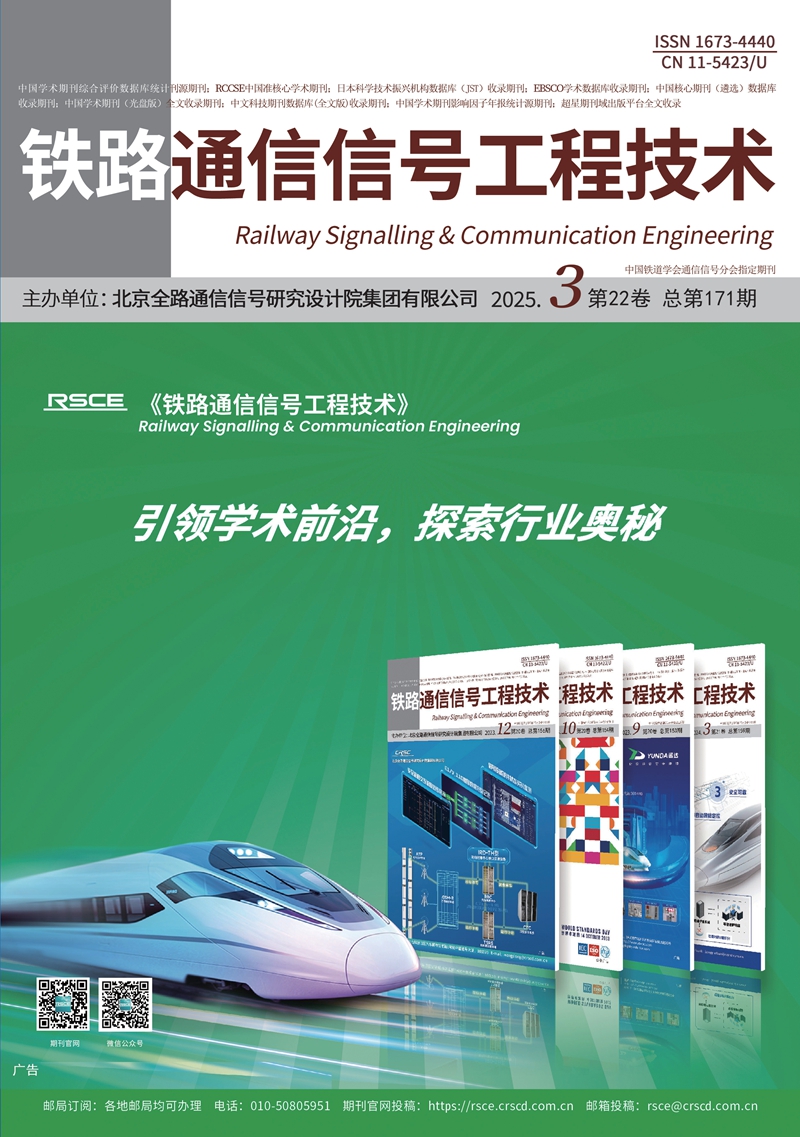
-
月刊
Monthly
-
第22卷 第3期 总第期
-
Vol.22 No.3 S.No.
-
出版:
2025-03-21
-
Published on:
-
创刊:2004 年
-
First Issue: 2004


